Are you considering getting a fir tree for your Christmas celebrations this year but unsure if it’s the right choice? Don’t worry! We have complete information on the advantages and disadvantages of fir trees, which are a popular choice for the holiday season.
Choosing the right Christmas tree is essential, as it’s the centerpiece of your decorations and family traditions.
Fir trees are part of the evergreen conifer genus and are known for their needle-like leaves that remain green throughout the year.
Let’s take a closer look at the three most commonly used firs for Christmas trees and their characteristics:
Noble Fir
The noble fir is a popular choice for Christmas trees, known for its thick branches evenly spaced along the trunk.
It can grow up to 80 meters tall and has needles that curl upwards, making it a sturdy option for all your Christmas decorations.
The smell of fir is pleasant, woody, and not too strong.
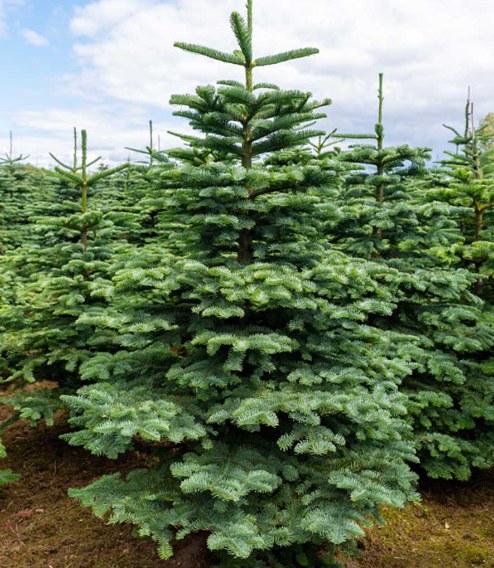
Fraser Fir
The Fraser fir’s yellow-green branches are conical, with the branches sloping slightly upwards.
The branches are known for their exceptional strength, making this Christmas tree an excellent choice for heavy ornaments, garlands, and holiday decorations.
The needles are spiraling along the branch, giving off a more aromatic scent.
The Fraser fir grows to a height of 82 feet.
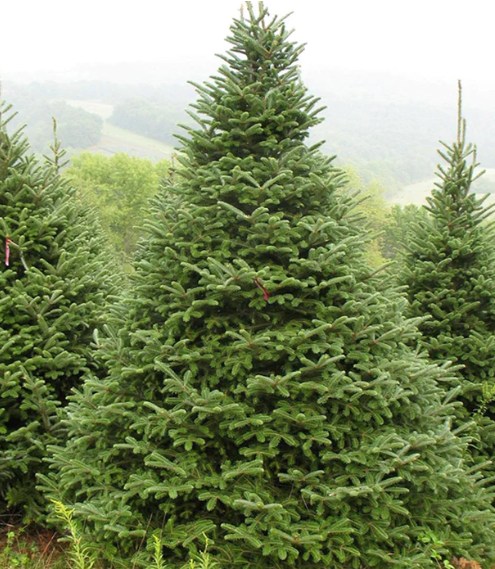
Balsam Fir
This evergreen tree is known primarily for its conical shape, dense dark green flat, and needle-like needles.
The needles can also have a silvery white tinge and are commonly used for Christmas wreaths and bouquets.
Its spicy Christmas scent makes it one of the most popular Christmas trees.
This particular variety of fir is small to medium-sized and grows up to 65 feet tall.
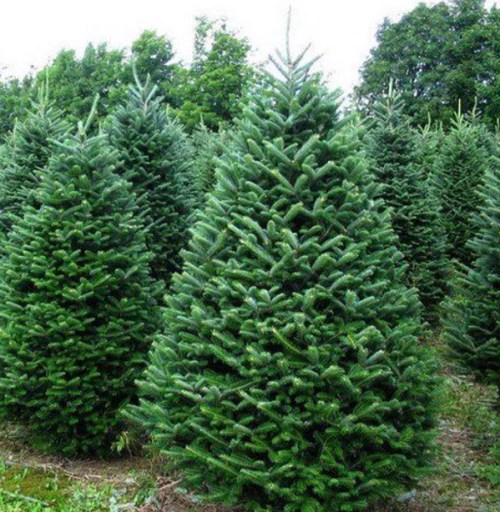
| Name of the tree | The appearance of needles | The power of the branches | Scent | Height |
| Noble Fir | dense needles with a tendency to curl upwards | solid branches | woody, not very aromatic | up to 263 feet |
| Fraser Fir | spirally winding along the branch | extremely strong branches | stronger scent | up to 82 feet |
| Balsam Fir | dark green, flat, dense, sometimes silvery white | solid branches | spicy Christmas scent | up to 65 feet |
Looking for inspiration for DIY Christmas table decorations? Make them with us! Try homemade Christmas table decorations.
We have two great tips for you on how to choose the best Christmas tree for your home:
1. Measure the space where you want to put the tree so that you can choose the right size.
2. Check the freshness of the tree. Make sure the needles are firmly attached and don’t fall off easily.
If you want to buy an indoor Christmas tree, there are several key considerations to remember:
First and foremost, ensure a gap of around 6 inches between the top of the tree and the ceiling. This will help to prevent the tree’s tip from twisting under the weight of the ceiling. It is also important to remember to add the height of the stand to the height of the tree when measuring to ensure that you have the right size.
When selecting a tree, consider the shape of the tree. Take a good look at its shape. Walk around it and view it from different angles, stepping back at least a few meters to get a better sense of it in space.
Check that the branches are symmetrical and that none are sticking out awkwardly or unattractive.
Additionally, ensure that the tree trunk is as straight as possible, as this will help it stand up straight and tall.
Fir types
Fir trees are a popular choice for Christmas trees, and there are around 56 species to choose from.
These evergreen conifers are found in North and Central America, Europe, Asia, and North Africa and can grow to be anywhere from 30 to 260 feet in height, with a trunk diameter of 20 inches to 13 feet.
One of the distinguishing features of firs is that their cones stand upright on branches, resembling candles, and break apart when they mature.
Different fir species can be identified by the size and arrangement of their needles, the shape and size of their cones, and the length and position of their cone scales.
If you are looking for a fir tree for Christmas, some popular species include the Balsam fir, which has a classic Christmas tree shape and a pleasant scent; the Fraser fir, which has a dense, symmetrical shape and excellent needle retention; and the Douglas fir, which has a unique blue-green color and a conical shape.
Other options include the Noble fir, the Grand fir, and the Concolor fir, each with unique characteristics and benefits.
| Type of the tree | The appearance of a tree | Maximal height | A type of needle | Type of cones | Place of origin |
| Balsam Fir | 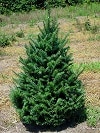 | 65 feet | Flat, 1,2 inches long, dark green | Erect, 4–8 cm long, purplish red | They grow at the top of the tree, are red and cylindrical, and are up to 38 inches long. |
| Fraser Fir | 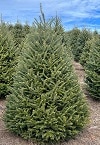 | 80 feet | Flexible, flat, dark green, sometimes silver-gray-blue-green | Cylindrical, red-yellow or yellow-green, 20 – 25 inches long | North America, Europe |
| Noble Fir | 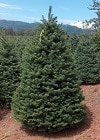 | 250 feet | Flexible, sickle-curved upwards, dense, 2.5-7.5 inches long | Rectangular-cylindrical, grown in clusters under the needles | Northwest USA |
| Caucasian Fir | 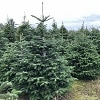 | 190 feet | 5 – 15 inches long, directed obliquely forward | They grow at the top of the tree, are red and cylindrical and up to 38 inches long. | Asia Minor and the Caucasus |
| White Fir | 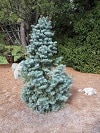 | 200 feet | 5-7.5 inches long, flat, dark green | Erect, 20 – 40 inches long, cylindrical, rounded at the top | mountain and foothill areas in Central Europe |
| Frosted Fir | 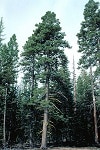 | 190 feet | 3 – 15 inches long, grey-green-blue-silver or dark green, sometimes grooved | 14-20 inches long, wide, having a rounded top, yellow-green and then brown | southwestern North America and Mexico |
| Korean Fir | 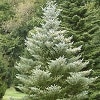 | 55 feet | 2.5 – 5 inches long, dark green | Spherical-ovoid, brown-red-purple-yellow, 12 – 20 inches long | mountain area in South Korea |
Do you want to put a tree in a stand or hate cutting trees? Instead, buy a planted one that you can place in your garden after Christmas. Then, find out everything about Christmas trees in a flower pot!
How to care for a potted tree indoors
Are you wondering how to take care of a potted tree indoors?
Fir trees are a great choice because they have strong needles that don’t fall off easily.
Many types of fir trees can thrive indoors.
The most common types of houseplants include:
- Balsam Fir
- Fraser Fir
- Noble Fir
- Canaan Fir
- Douglas Fir
- Frosted Fir
To choose a suitable flower pot for your indoor fir tree, ensure it has good drainage to avoid waterlogging, which can cause root rot.
When it comes to the size of the pot, it ultimately depends on your taste.
However, choosing a spacious pot is essential so the tree’s roots have enough room to grow without sagging.
When watering your indoor fir tree, keeping the soil moist is essential. You can check the soil’s moisture level by simply sticking your finger into it. If the soil is on the verge of drying or completely drying, water it immediately.
Remember that the larger the tree, the more water it will need.
Placing the fir tree in the flower pot
Fir trees thrive in cool and moist environments, so it’s best to place them in an excellent spot inside your home, such as near a front or back door or by a window where they can get some fresh air.
However, avoid placing them in direct sunlight, as too much light can dry them out and cause their needles to burn.
Also, keep them away from fireplaces or radiators as they pose a fire hazard and may cause the needles to fall off.
How long can you leave the tree inside?
It’s recommended to keep the tree in a flower pot indoors until it reaches a height of about 6.5 feet, after which it can be transplanted into your garden.
Choose a sunny and sheltered spot in your garden, and ensure the tree is well-watered, especially during summer.
Keep the tree in shape by pruning any unruly shoots or dead branches.
Discover similar tips
How to take care of the tree outside
When transplanting the tree, avoid doing so during colder months to prevent temperature shock.
Fir trees grow best in full sun or partial shade in moist, fertile soil.
While they prefer sandy loam soil, they can adapt to poor, compacted soils and planting sites prone to heat and drought.
However, they often wilt and grow slowly in such conditions.
Therefore, fir trees are unsuitable for growing in hot and dry areas. It’s best to plant a fir tree in the spring and avoid planting it in the fall.
After planting, water the tree well and continue watering it regularly during the first growing season, ensuring that it receives at least 1 centimeter of water from rainfall or irrigation every week. Regular watering supports a robust root system. Spread a 2-centimeter-thick layer of mulch over the root zone to help conserve soil moisture.InsertRephrase
Take a look at how to plant fir and get inspired.
How to care for Christmas trees in a stand
Have you decided that your Christmas tree will be a hemlock this year but don’t want to grow it at all?
Then, choose a suitable stand in which to put the food. It is important to cut the fir in the lower part so that the tree absorbs water better and the stand holds the tree comfortably and does not overturn it.
Place the food in light, but not near a radiator or fireplace. The heat could cause the tree to decay quickly and the needles to drop prematurely.
It is advisable to pour water into the stand so the fir is still submerged and then add water regularly.
Advantages and disadvantages of indoor fir:
| Pros | Cons |
| uniform shape | may cause allergy |
| beautiful, distinct fragrance | at higher temperatures, the needles fall off quickly |
| strong branches that will hold even heavier ornaments | the distinct smell of some species may bother more sensitive people |
| improving mental health | rapid growth |
| it can last up to 6 weeks or more in water | higher price |
Advantages and disadvantages of outdoor fir:
| Pros | after Christmas, you can plant it in the garden |
| plenty of shade | with high humidity, the roots tend to rot |
| a home for animals | it needs cool and moist, nutrient-rich soil |
| captures twice its weight in carbon and pollutants | attracts pests |
| improves air quality and absorbs exhaust gases from cars | can grow to enormous sizes |
| after Christmas you can plant it in the garden | releases sticky sap |
Have you considered getting a tree other than a fir tree? If you’re still hesitating, check out the pros and cons of spruce as a Christmas tree.
Have you decided that your Christmas tree will be a fir tree?
Then, you can look forward to a beautifully green tree with needles that won’t fall off.
If you take proper care of the fir tree, water it, protect it from extreme heat, and let it stand in a bright place, it will repay you with its beauty and wonderful fragrance.

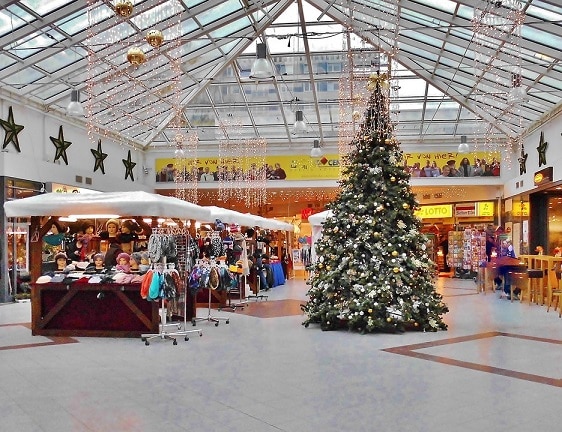
 Milan & Ondra
Milan & Ondra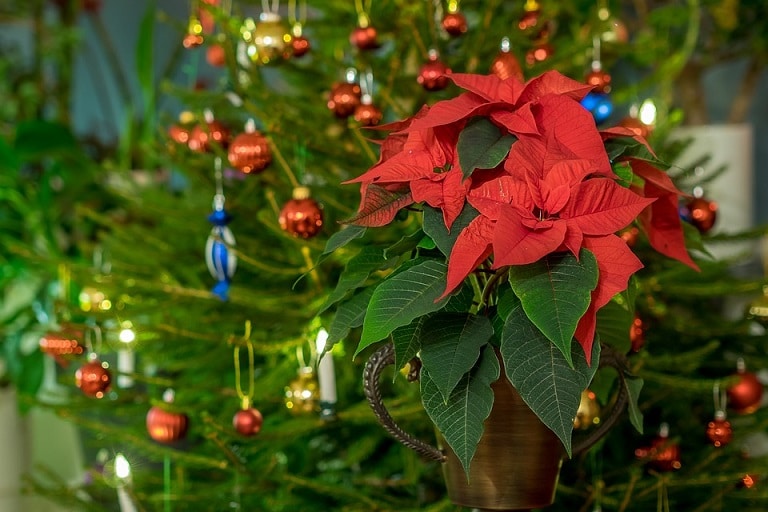
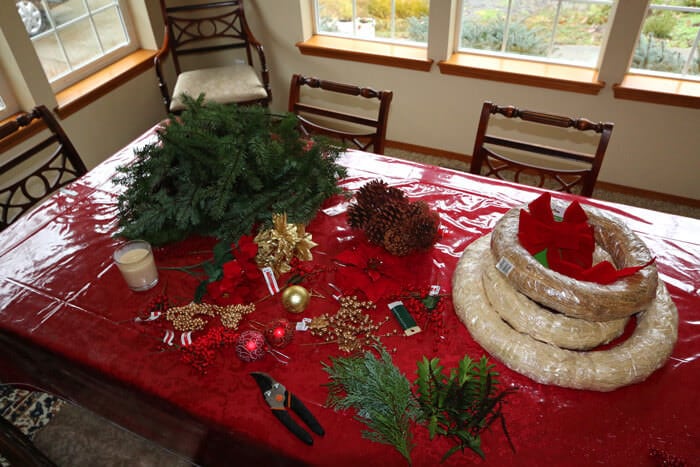
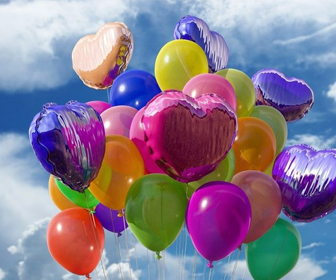
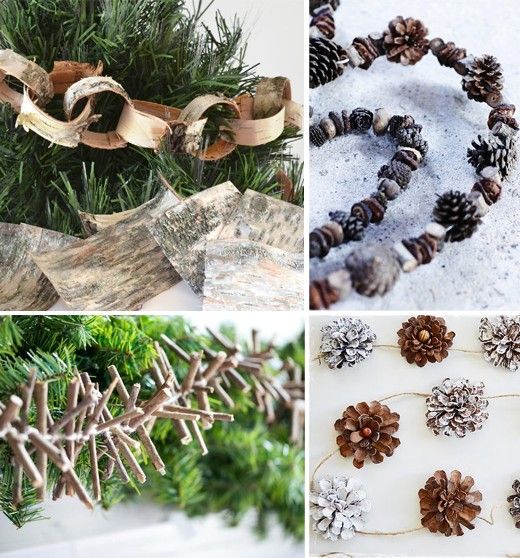
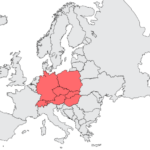 Central Europe
Central Europe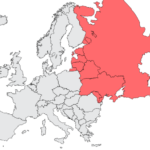 Eastern Europe
Eastern Europe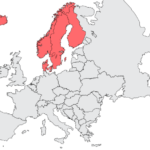 Northern Europe
Northern Europe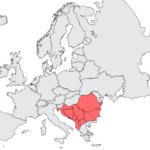 Southeast Europe
Southeast Europe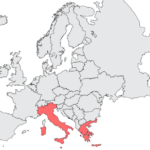 Southern Europe
Southern Europe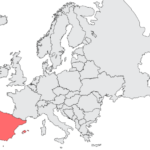 Southwestern Europe
Southwestern Europe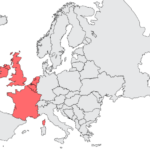 Western Europe
Western Europe